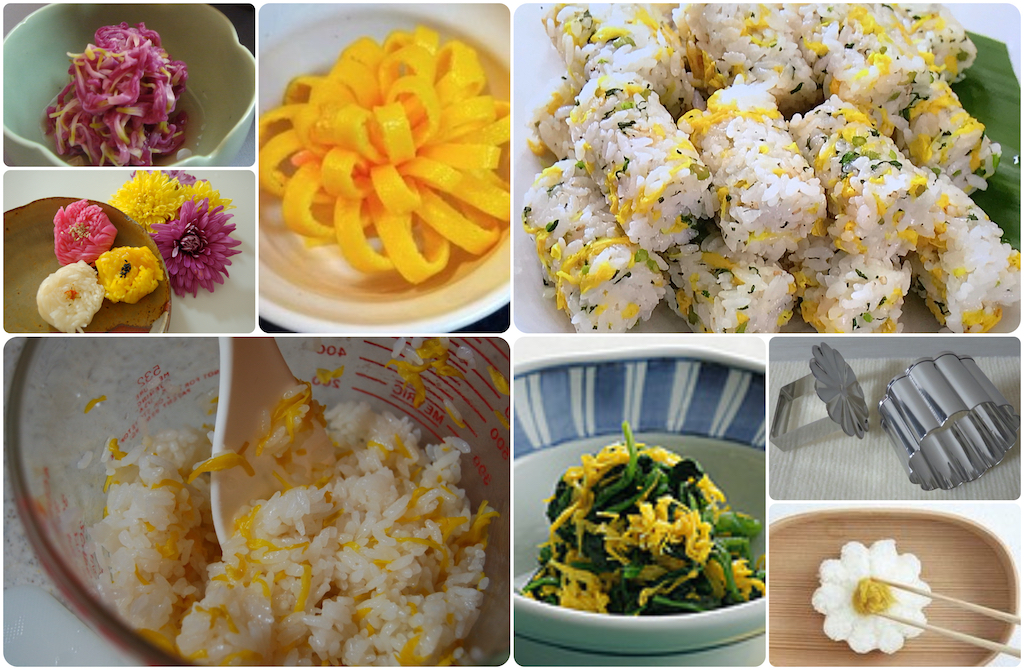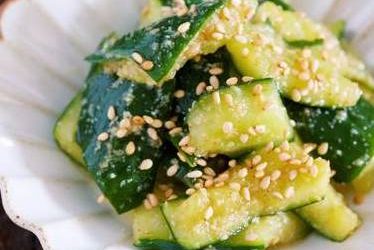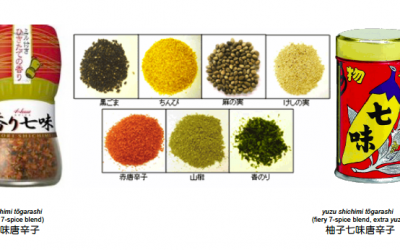
Kitchen Culture Cooking Club
EXPLORE and PRACTICE Japanese cooking in your own kitchenAbout Kitchen Culture Cooking Club
Welcome to the Kitchen Culture Cooking Club, a community space providing encouragement to those who want to EXPLORE and PRACTICE Japan’s washoku wisdom in their own kitchens.
To facilitate this, themed projects will be posted to this page periodically. Project Assignments and links to relevant reference material stored on this site will be posted to this page. Anyone, anywhere in the world, with a sincere interest in Japanese food culture is welcome to browse the contents of this page and then replicate the themed project in their own kitchen.
For those who wish to display-and-discuss their projects with like-minded people, I invite you to join the KITCHEN CULTURE Cooking Club Facebook Group (formerly the TSUDOI Project), an interactive community space.
Project Chrysanthemum

Chrysanthemums ・ 菊 Kiku
To eat … To use as a motif
This month’s theme is CHRYSANTHEMUM… to eat and to use as a motif in designing your autumnal menu. If you can source fresh, edible flowers try making KIKU NAMASU, sweet-and-sour pickled petals (yellow and/or purple). These can be enjoyed on their own, as a garnish for grilled or fried foods, or be paired with other vegetables, such as this Cucumber and Chrysanthemum salad or Enoki Mushroom and Chrysanthemum salad. No dressing required for either.
If you toss the pickled petals with cooked rice it becomes “chrysanthemum sushi” — the sweet-and-sour pickling liquid that clings to the petals seasons the rice. Add some toasted sesame seeds and shredded shiso leaves to the chrysanthemum sushi rice for added texture and color. Make the chrysanthemum sushi rice a base for chirashi-zushi; top with soy-simmered shiitaké mushrooms and ribbons of omelet. The same thin omelet can be folded, snipped and rolled to resemble a chrysanthemum to decorate the sushi, or be tucked into an obento.
If you own, or can source, a rice mold shaped like a chrysanthemum (above photo) press out a flower shape on your plate and add pickled petals at the center to mimic the pistal. Or, shape the rice into logs. You could stuff the logs into inari pouches if you like.
If you can’t source fresh chrysanthemums use decorative knife skills to carve white turnips into chrysanthemum flowers. A combination of techniques (salt-wilting and marinating in a sweet-and-sour brine) will flavorthe turnips. Natural food dyes – gardenia pods and red shiso leaves – tint the turnip-flowers yellow and purple, respectively. These piquant turnips most often garnish platters of grilled fish or meat. Download full instructions for Three-Colored Turnip Flowers
In response to questions from members of the Kitchen Culture Cooking Club I have created a reference sheet regarding EDIBLE VARIETIES of chrysanthemums. This information has also been added to my Kitchen Culture blog post.
The Kitchen Culture Cooking Club looks forward to seeing what dishes YOU make with chrysanthemums (or other edible flowers such as marigolds or nasturtium) in YOUR KITCHEN. Or make dishes that incorporate the chrysanthemum theme. For additional informatiion and inspiration, visit my Kitchen Culture blog post.
The theme of the November 2021 newsletter is CHRYSANTHEMUM. A copy can be downloaded from my newsletter page.
Recipes and Resources
Stock (Dashi)
Dashi stock is essential to making soups and simmered or stewed dishes. Dashi is also used when making many egg dishes and all sorts of sauces, dips and dressings. Using good dashi will make a noticeable difference in the outcome of so many dishes you prepare.
Click to download recipes for (vegan) Kelp Alone Stock or Standard Sea Stock + Smoky Sea Stock
How to Cook Rice
In Japanese, the word for cooked rice, ご飯 GOHAN, is the same as the word for a meal, ご飯 GOHAN. Indeed rice is central to the meal. Download the Rice with Mixed Grains recipe.
How to Prepare Sushi Rice
Sushi dishes are made with rice that has been seasoned (with sweetened vinegar) AFTER being cooked. Download the Classic Sushi Rice recipe.
Quick Pickles
The Japanese enjoy a wide variety of tsukémono pickles, many can be assembled quickly and are ready to eat within a short time.
Download a recipe for Quick-Fix Hakusai Cabbage.
Smashed Cukes
Smashed cucumbers dressed with sesame-soy vinaigrette-style dressing, garnished with toasted sesame seeds.Smashed Cucumbers with Toasted Sesame Tataki Kyuuri no Goma Aé たたき胡瓜の胡麻和え Most supermarkets in Japan set up a small table at the back of their produce section...
Kimpira & 7-spice blend
Classic KIMPIRA, stir-fried slivers of carrot and gobō (burdock root) finished with 7-spice blend and toasted sesame seeds.Kimpira & 7-spice blend (shichimi tōgarashi) 金平・七味唐辛子 The original seventeenth century dish called kimpira was made from finely whittled gobō...
Like us on Facebook for the freshest content or follow Taste of Culture on Twitter.


